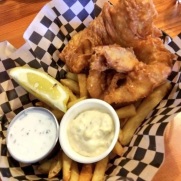Day 32, Thursday, August 16, 2018
Lexington, Kentucky
The Mary Todd Lincoln House itself was built between 1803 and 1806, and originally served as an inn. If you don’t know Mary Todd Lincoln or why you should care about her family home, she was the wife of our 16th President Abraham Lincoln. Mary’s father, Robert Todd, purchased the 14 room mansion in 1832 and lived here until his death in 1849.
Mary was born in 1818, and didn’t move here until 1832, and even then, spent much of her time living in a boarding school for girls about a mile away. Even though she could have traveled back and forth to school from home, she felt that staying at the school was a better option; she described the school as being more of a home for her than the home with her father and stepmother. In her late teens, Mary moved to Springfield to live with her sister. That’s my long way of saying that Mary Todd Lincoln really didn’t spent much time living in the Mary Todd Lincoln House, even though it was the family home during a part of her childhood.
Unfortunately, legal disputes after Todd’s death meant that the home was auctioned. In the days after it left the Todd family, it was used as a boarding house, a grocery store, and even a brothel. By the 1950s, the home was in rough shape, and a grassroots campaign began to save the home. It was opened as a museum in 1977, making it the first museum dedicated to a First Lady.
Due to the fact that it is dedicated to Mary Todd Lincoln’s life, it tells a different story of her than is frequently depicted. They are honest about her struggles with grief and mental illness but they also share that Mary was a very intelligent woman who played an enormous role in shaping her husband’s political career. Abraham Lincoln married up; Mary Todd came from the upper class – high society of the West. She knew politics, was very ambitious, and was not a woman content to wait in the wings in what was a society controlled by men. The docents let visitors know about Mary’s qualities and her genteel upbringing. They share openly about her trouble with her stepmother, and the fact that her father was often absent. It was Mary’s sisters who felt more like mothers to her.
The home has been restored to what it would have looked like when Mary Todd Lincoln lived here, and they have been able to acquire some of the original Todd furnishings and household goods that were in the home.
They also have artifacts from Mary’s later life, including an original advertisement announcing the last night of Our American Cousin from its run at Ford’s Theatre, the play that Mary and Abraham attended the night Lincoln was assassinated. If you read the date, you see that it was advertising the last night as Friday, April 14, 1865, the very night Lincoln was shot.
The docents at the home really do a great job of telling the story of Mary as her own person, rather than an extension of her later President husband. As I have said, they are honest and candid about her shortcomings. However, they also explain that her own and President Lincoln’s opponents painted an unfair portrait of her in the media, and their later “tell all” books. Sensationalism drives sales; this hasn’t changed since the 1800s, and what better way to make a buck?
They allow photos within the home (yay!) and allow enough time in each room for guests to see everything and ask questions. They really encourage questions even! This was my second visit to the Mary Todd Lincoln Home, and it is still one of the best home museums I have been to. If you are in Lexington, do visit!











































